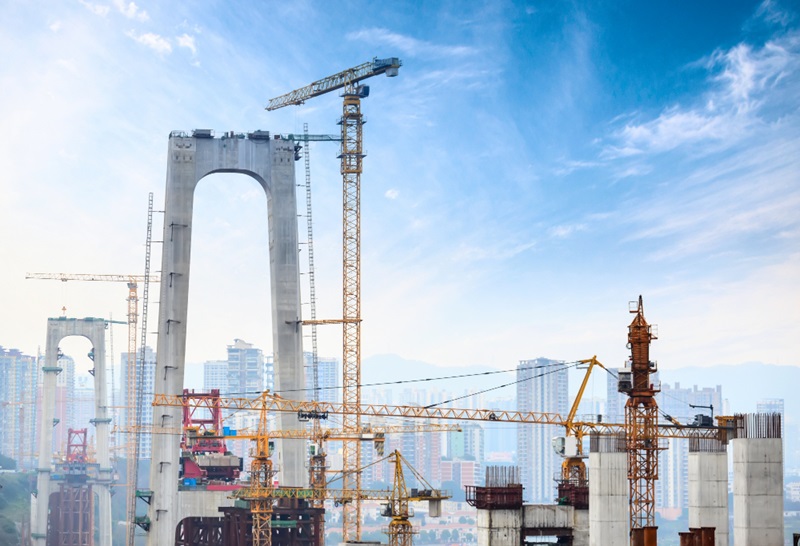Are you captivated by the industrial charm of open brick walls, dramatic steel beams, and raw, unfinished spaces? Have you ever wondered about the backstory of how utilitarian constructions became such sought-after artistic escapes? Today, we delve into the fascinating world of industrial construction. Moreover, we will explore what it has become in the current sphere of architecture and design, drawing threads of commonality, tracking its evolution, and projecting forward to the trending facets of tomorrow.
Industrial buildings were first conceived from the bones of practicality and efficiency. However, over time, these skeletal edifices of industry have been clothed in the rich tapestries of design and artistry. This transformation was not orchestrated in a day, but rather emerged as a result of a series of shifts in perception and practice. By unpacking this transformation, we aim to provide a comprehensive understanding of the past, present, and future of industrial construction.
Journey with us as we unearth the roots of industrial buildings, trace the redefinition of their contours, and forecast their glowing trajectory within the realm of design. Through this exploration, we hope to shed some light on the story behind the robust structures of glass, brick, and steel that punctuate our urban landscapes and increasingly become our aesthetically favoured homes and workplaces.
The Genesis Of Industrial Construction
At the onset, industrial buildings were primarily engineered as factories, warehouses, and workshops, constructed with the bare necessities in mind – practicality and durability. Unrefined, rugged materials like bricks, steel, and exposed pipes became the foundation of these buildings, as designers aimed to maximise efficiency and functionality.
At the heart of industrial construction philosophy, the ethos was simple: form follows function. This translated into high ceilings to accommodate large machinery, open floor plans for operational fluidity, and large windows to provide ample natural light. Despite this dominantly practical design approach, these buildings exuded a particular aesthetic appeal, which would later become a defining character of the style.
As these structures aged, so did their purpose, bringing about a significant shift. They transitioned from functional workspaces to relics of a bygone era, but it was this very transition that sparked the resurgence of industrial construction.
The Evolution From Utility To Beauty
Over the years, urban landscapes started morphing, leaving many industrial buildings deserted and decaying. The expansive, uninhibited spaces these structures offered, set against a backdrop of gritty, rustic charm, weren’t unused for long.
Artists seeking large canvases and above all, affordability, were the first to see potential in these derelict structures. They converted them into studios, allowing the aesthetics of the industrial to seep into their artistry. Architects and designers quickly caught on, embracing these otherwise neglected spaces and flipping them into chic havens of modern living.
However, this change wasn’t merely about recycling existing structures. A parallel trend of designing new spaces with an ‘industrial vibe’ started brewing, giving rise to the distinctive style known as ‘Industrial Chic.’
Mainstream Adoption Of Industrial Chic
The rise of ‘Industrial Chic’ was like a well-timed symphony, each note hitting a resonant chord with the modern population. The style was a mélange of robustness and minimalistic elegance, elevated by the creative use of wide-open spaces and abundant natural lighting.
Lofts, eateries, retail spaces, and even residential apartments started reflecting this trend, with each design becoming more innovative than the last. The enduring appeal of exposed pipes, weathered wood, and metal fixtures combined with softer elements to create a distinctive dichotomy and drama in these spaces.
Pros And Cons Of Industrial Construction
Like any architectural style, industrial construction has its benefits and pitfalls. The pros lie in the style’s flexibility, adaptability, and sustainable potential. It serves as a canvas for designers to blend aged character with modern accents, creating a welcoming and inspiring space.
On the downside, maintaining the authenticity of industrial design can be challenging, and the style lacks the warmth and cosiness often associated with traditional domestic spaces. It can appear cold and impersonal if not appropriately balanced.
Industrial Construction In Today’s Context
From its humble origins to its current iconic status, industrial construction has come a long way. Today it caters not only to the practical facets of building design but also serves as an artistic chapter in the narrative of architecture and interior design.
Today, industrial construction is continuously enhanced with modern technology, creating spaces that are not just structurally sound but also aesthetically pleasing and environmentally sustainable. Smart tech, energy-efficient designs, recycling and repurposing are now core elements of industrial design, showcasing a dazzling fusion of form, function, and future.
Trends Shaping The Future Of Industrial Construction
As we look ahead, exploring some of the current trends, it’s evident that industrial construction will continue on its captivating journey. From eco-friendly building materials to the embrace of green spaces, the transition towards intelligent building systems to the revival of local craftsmanship – these trends are redefining the future of industrial design.
Notably, ‘Biophilic design’ – an approach that integrates nature into built spaces – is gaining momentum within the industrial design realm. It is reshaping the way industrial spaces look and feel, making them more inviting, healthier and productive while staying true to the style’s core values.
Conclusion:
Industrial construction is a testament to the transformative power of design and our capacity to envision using history, practicality, and creativity. This edgy, unapologetically raw style harmonises the old with the new, marrying the strengths of practical robustness with emerging trends.

